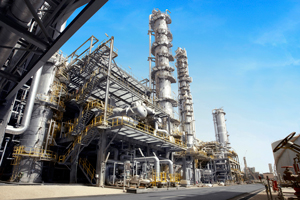Facts about ATEX
TEX is divided into two directives, both issued by the EU and implemented in Danish law.
A distinction is made between equipment and users in connection with potentially explosive atmospheres.

| • ATEX-directiv 1999/92/EF classification of potentially explosive atmospheres (ATEX workplace directive) |
|
| • ATEX-direktiv 2014/34/EU covers equipment requirements (ATEX equipment directive) |
Areas where an explosion * may occur must be classified according to the ATEX directives. Therefore, companies that store, handle and / or produce flammable liquids, gases or dust are often covered by the ATEX directives.
IWAKI have supplied ”ATEX-equipment” to many of these industries:
- oil and gas industry
 power plants
power plants- paint and paint factories
- chemical industry
- medical industry
- petrochemical industry
- bread factories and bakeries
- flour and sugar producers
- pharmaceutical production
- incineration plants
- treatment plants
‘Beredskabsstyrelsen’ and ‘Arbejdstilsynet’ are the authority for the
ATEX Workplace Directive in Denmark.

*: Explosion risk occurs when the following factors are present:
1) Explosive substance (eg can be flammable vapors, flammable gases, flammable dust)
2) Oxygen (may be natural in the area or be supplied)
3) Sparks (may occur from electrical or mechanical equipment or from static electricity).
Read more:
– ATEX pumps
– ATEX pumps from IWAKI Nordic A/S
– Categories and ATEX-zones
– Product marking